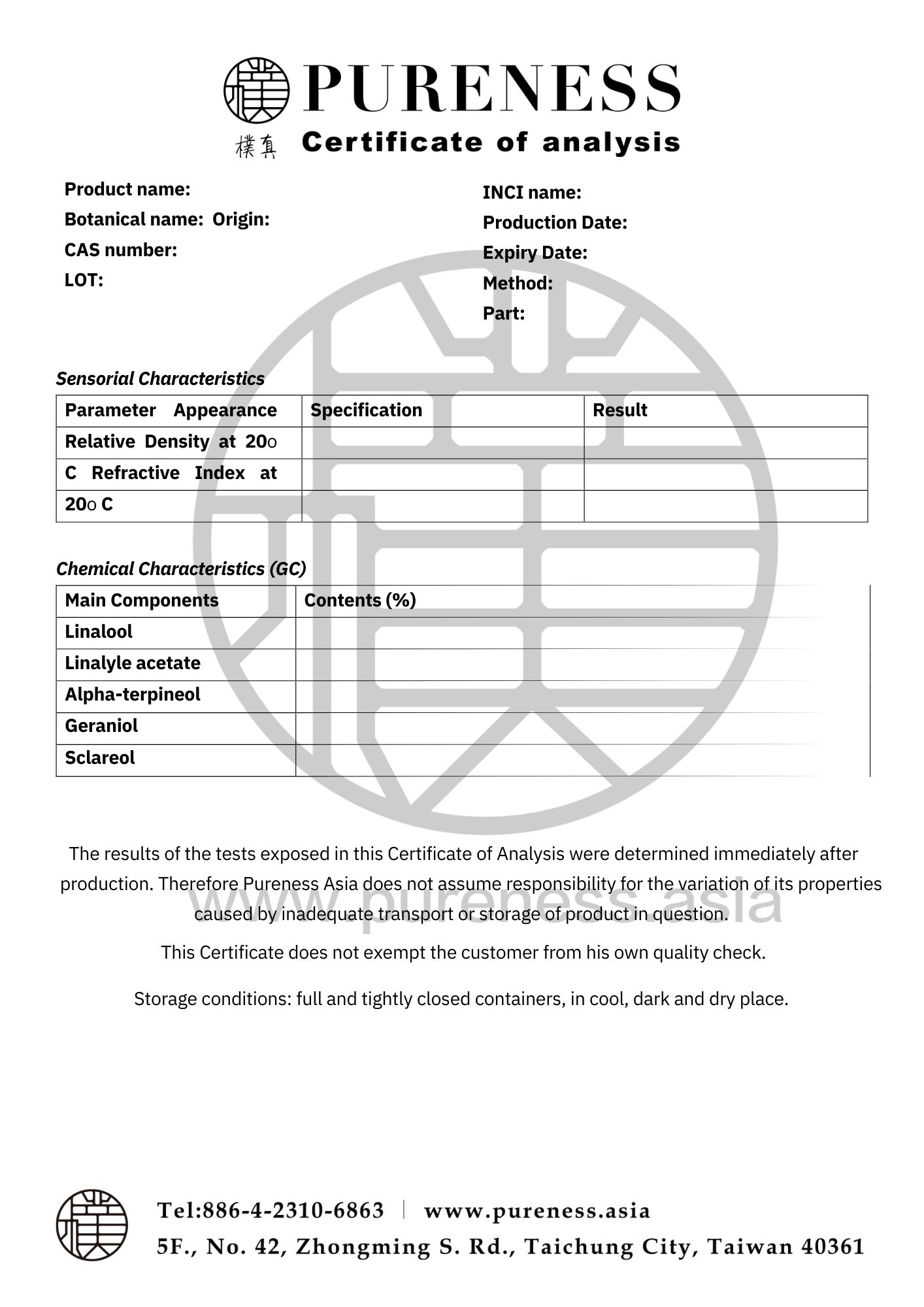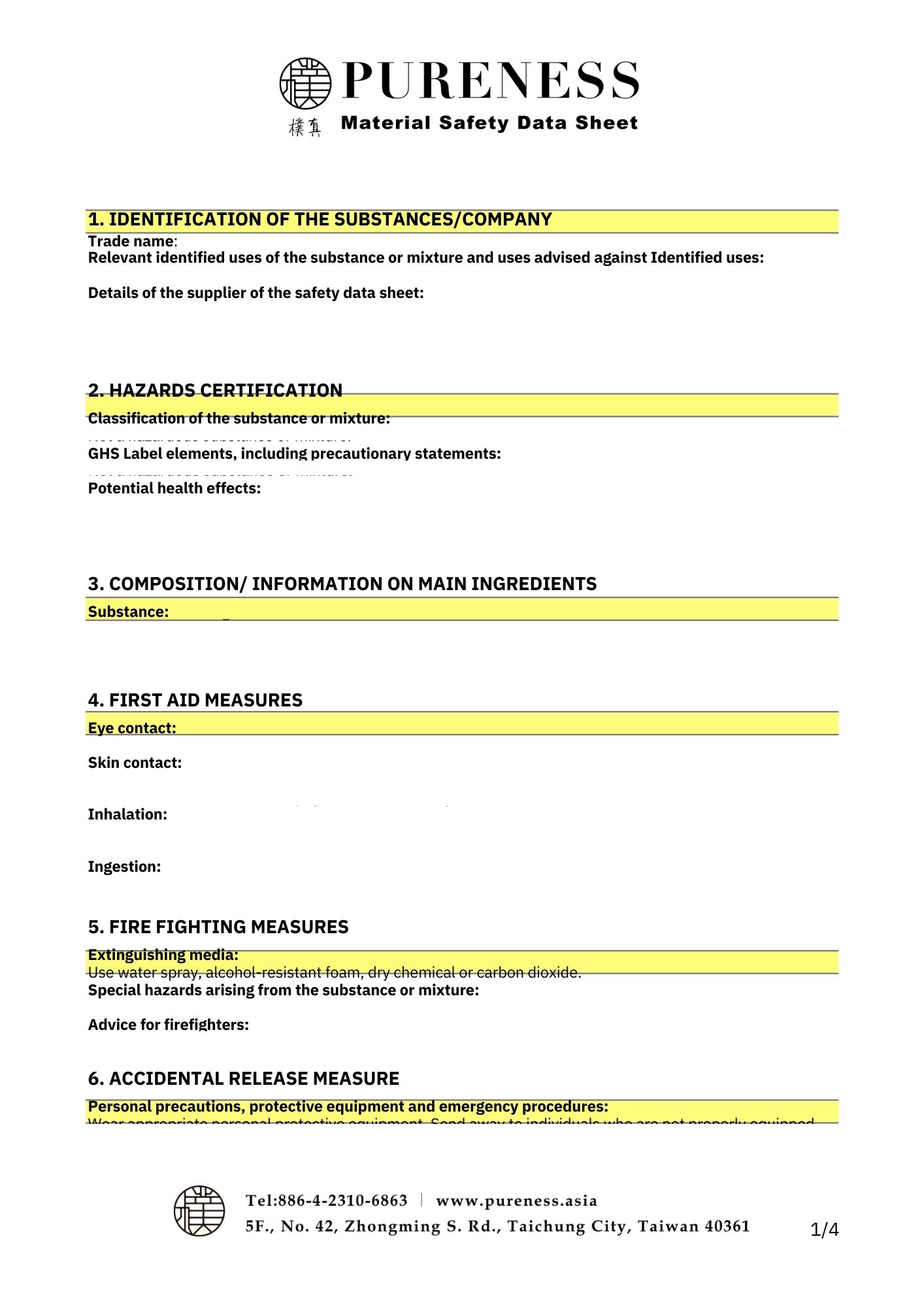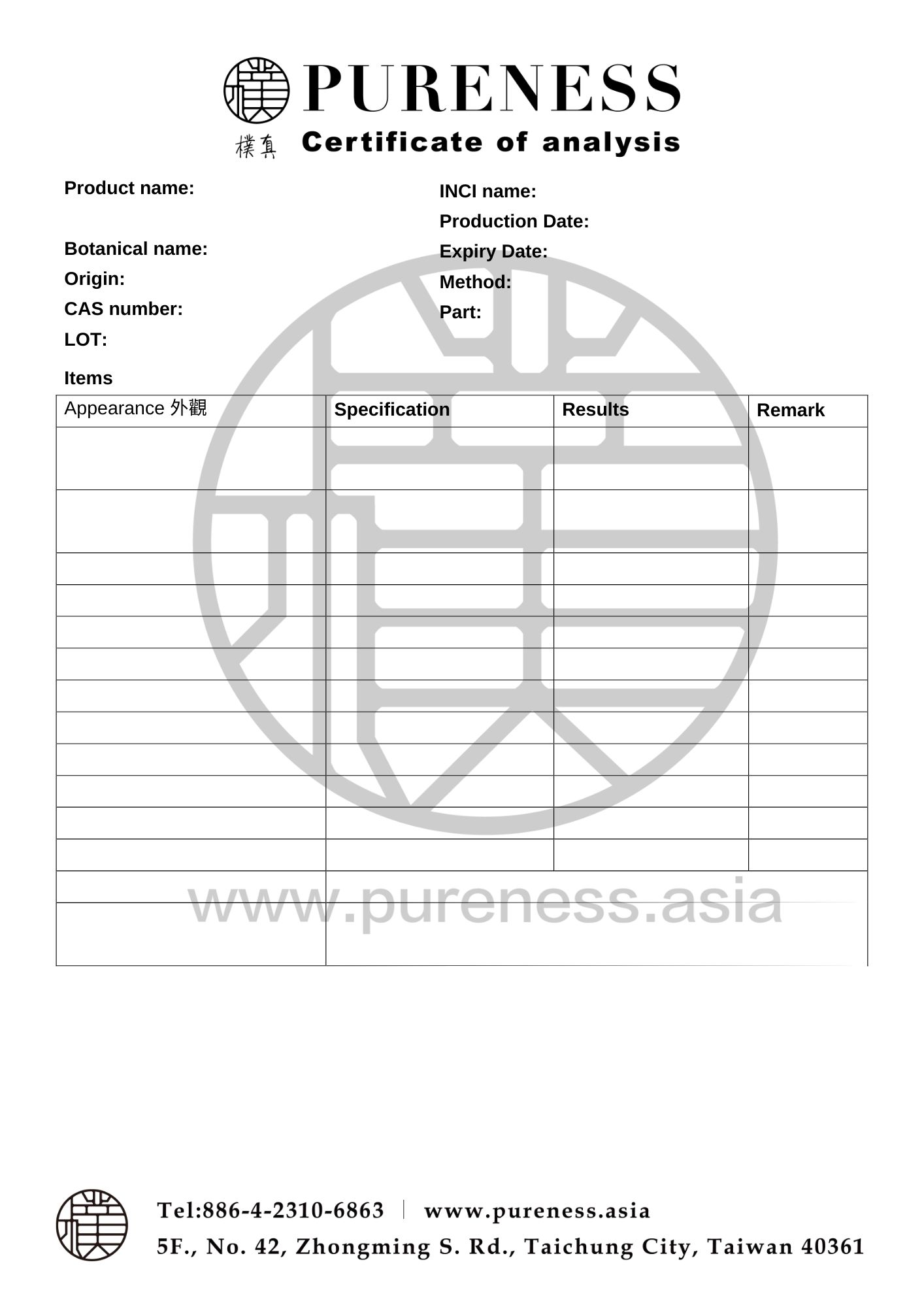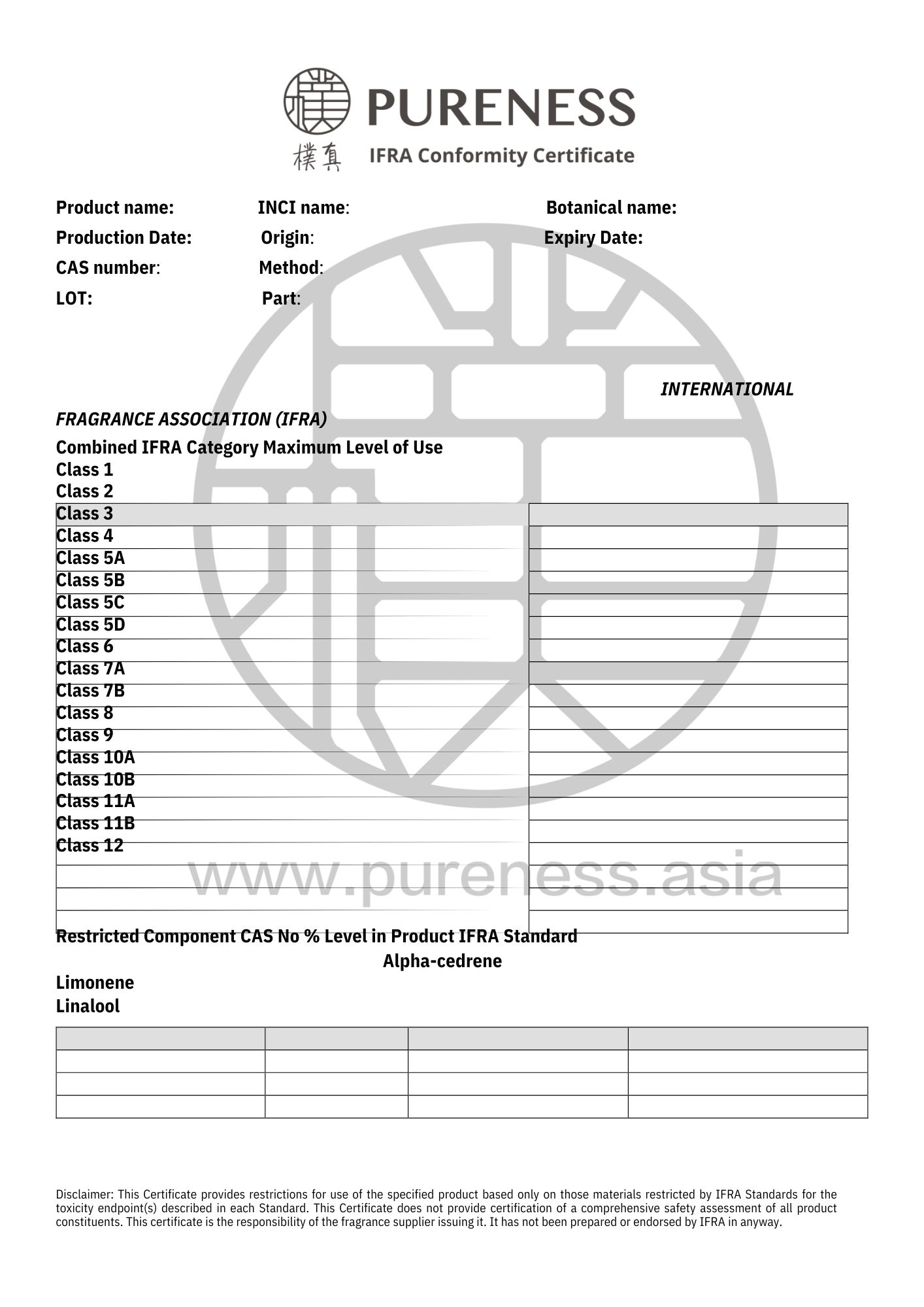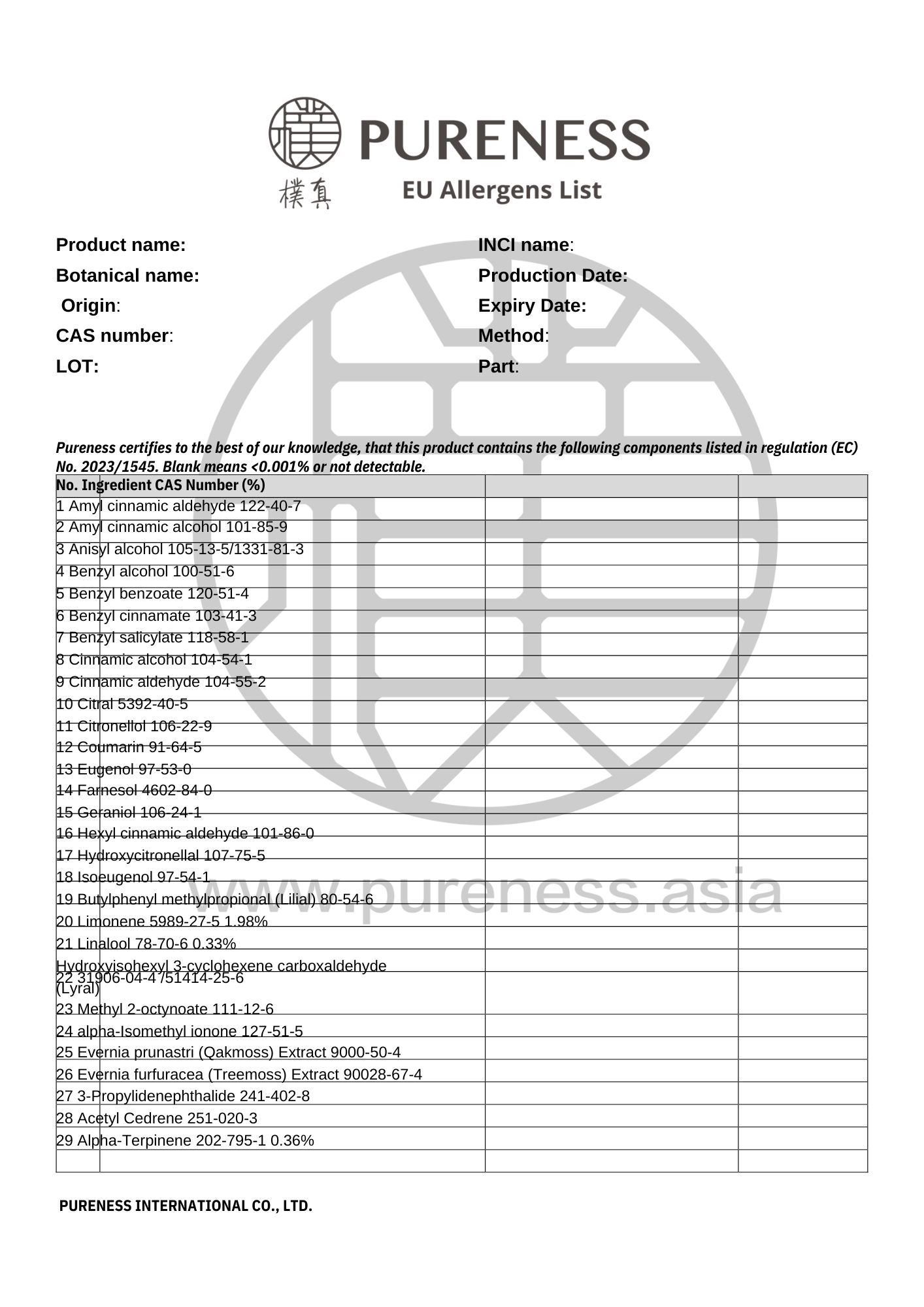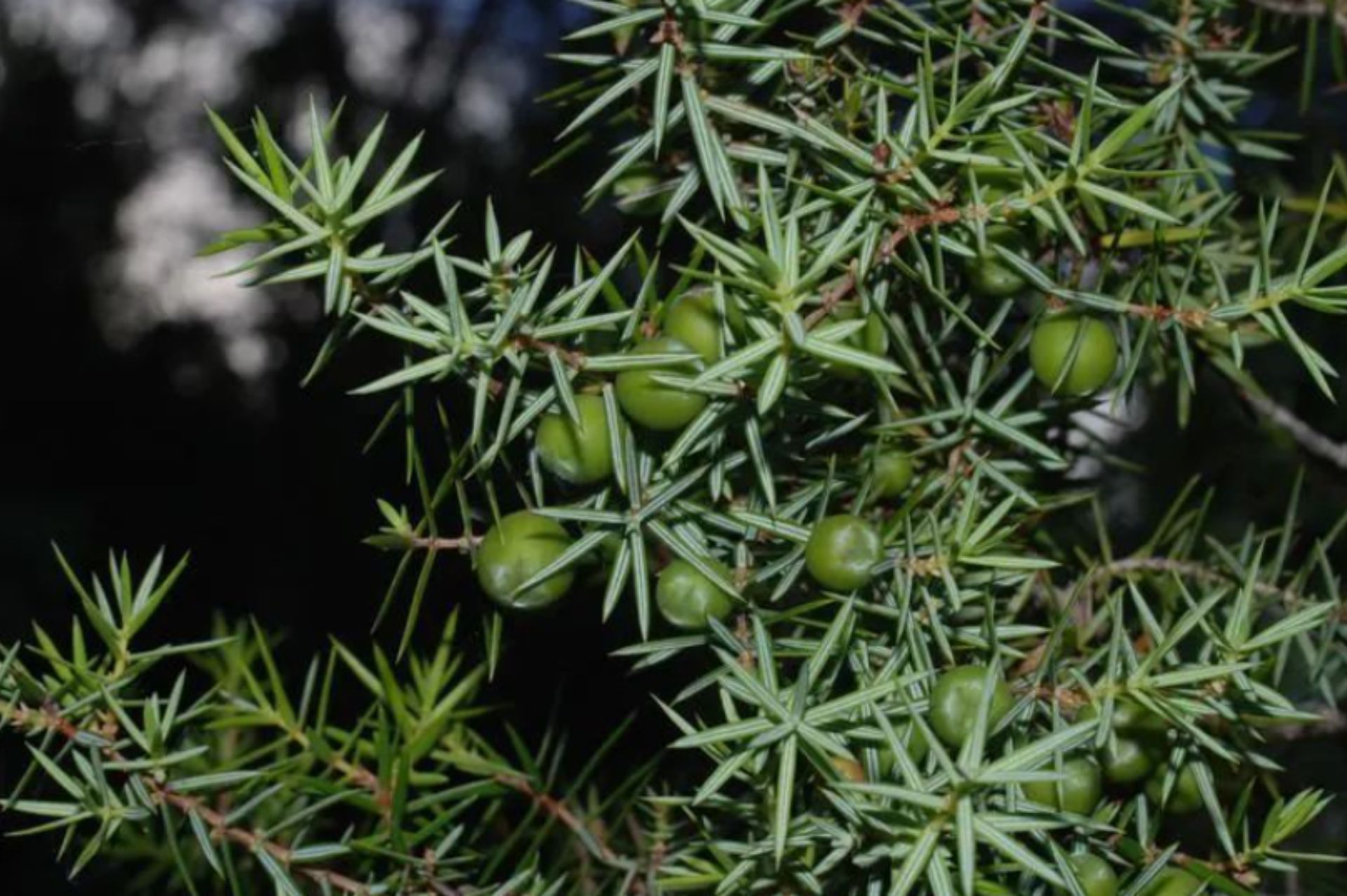
Cade
Scientific name|Juniperus oxycedrus
Origin|India
Classification|Wood series
Specifications|500g-25kg Please contact sales for details
Extraction part|Wood
Extraction method | Distillation
Plant family|Cupressaceae
Aroma|Smoky and burnt aroma
▎Essential Oil Introduction
Juniperus oxycedrus, also known as Cade, prickly juniper, prickly cedar, or sharp cedar, is a species within the cypress family (Cupressaceae), specifically of the Archaeplastida group. It is a spiny variety native to the Mediterranean region, ranging from Morocco and Portugal to southern France, east to the western tip of Iran, and south to Lebanon, Israel, and northwest Africa. Typically growing in rocky areas at altitudes of 1,600 meters, this evergreen shrub reaches about 10–15 meters in height. It is known for its needle-like leaves, peeling bark, and green to crimson or orange berry-like cones. Historically, local people would use its berries and burn its wood to repel insects.
Cade thrives in cool climates, is highly frost-resistant, and can grow in various soil conditions, from acidic soils to dry coastal rock crevices and sandy gravel areas. It is primarily wild and difficult to cultivate artificially, with some trees being several thousand years old. Its main component, delta-Cadinene, is quite rare. Although calendula contains the same component, its essential oil cannot be extracted by distillation, making Cade essential oil a unique alternative.
In ancient Sumerian and Babylonian times, Cade was used in rituals to ward off evil and negative forces. It was also one of the widely used medicinal plants among Native Americans. Its wood is exceptionally durable and ideal for furniture making. Additionally, essential oil collected from its leaves and branches is commonly used in the production of soaps and perfumes.
▎Component Analysis
|Main component: Sesquiterpenes
The main components are cadinene, 3-carene (δ-Cadinene), β-phellandrene, myrcene, β-caryophyllene, limonene, abietadiene, germacrene-D, and some trace components, including borneol, terpinolene, and anethole.
|Research Validation
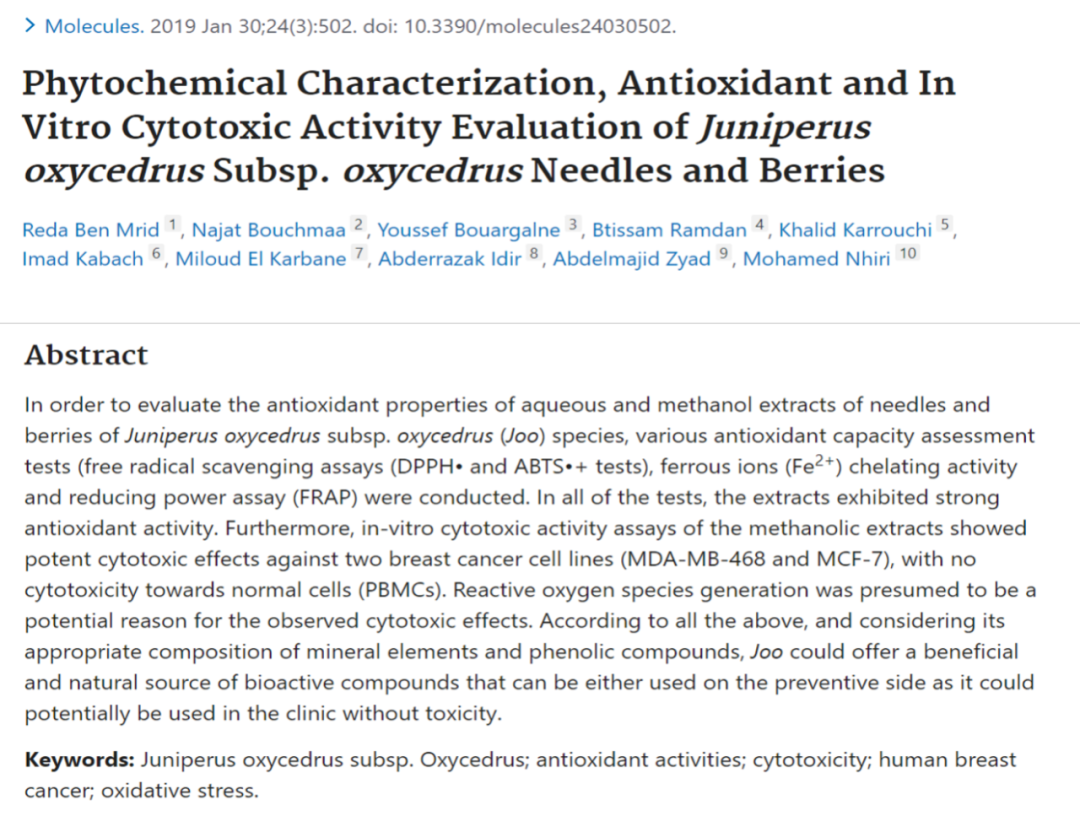
▸ Research shows that Cade can provide beneficial natural bioactive compounds.
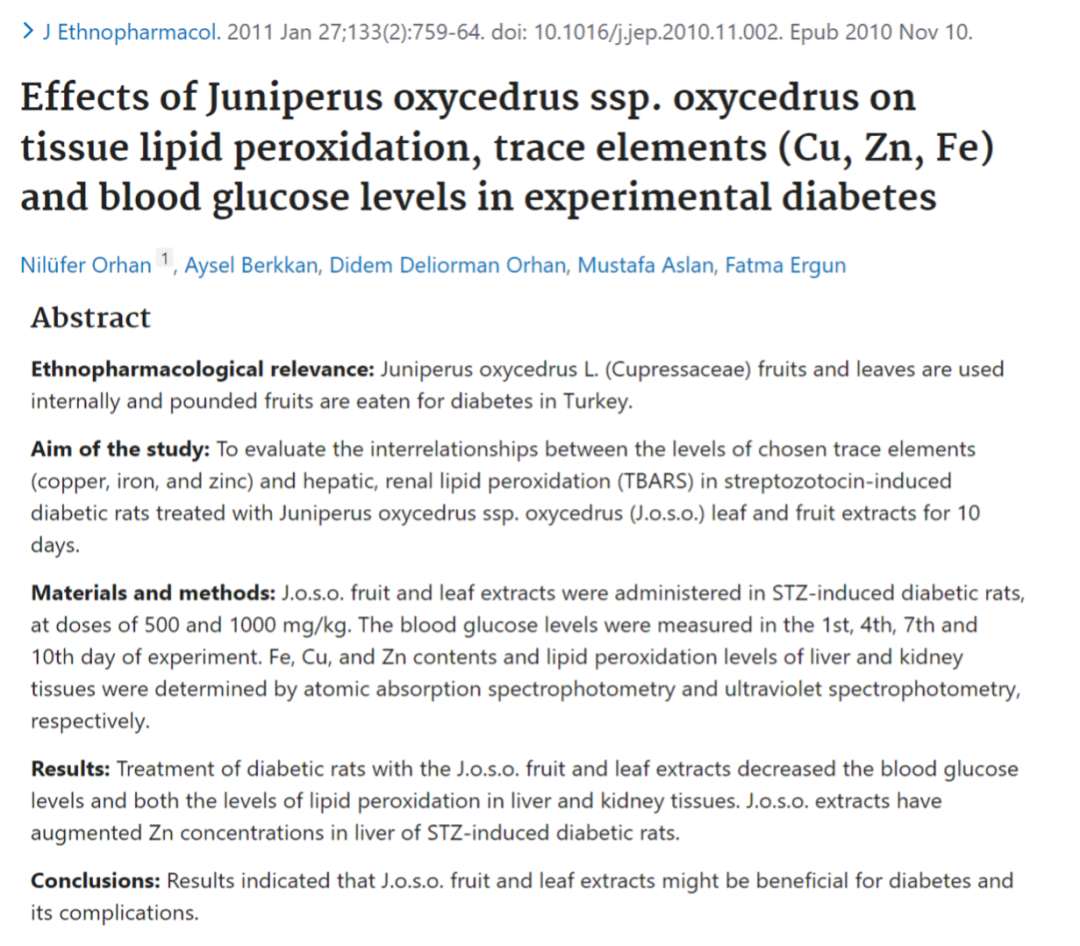
▸ Studies on the extracts from the fruits and leaves of Cade (Juniperus oxycedrus) have shown potential benefits for managing diabetes and its complications.
|Raw Material Certifications
To obtain relevant certification information, please contact us on WhatsApp.
▎References
- Ricciardi T, et al. Pattern of sensitization to Juniperus oxycedrus 4EF-hand polcalcin, Jun o 4, compared with the 2EF-hand grass homolog Phl p 7 in a general Italian population of subjects 203 p. Jan;234:108894.
- Seddouk L, et al. Isolation and characterization of a mesophilic cellulolytic endophyte Preussia africana from Juniperus oxycedrus. Environ Sci Pollut Res Int. 2022. Jun;29(30):4558.
- Fadel H, et al. Essential oil constituents of Juniperus oxycedrus L. and Cupressus sempervirens L. (Cupressaceae) growing in Aures region of Algeria. Nat Prod Res. 2021. Aug;35(15):2616-262616-2620.
- Ben Mrid R, et al. Phytochemical Characterization, Antioxidant and In Vitro Cytotoxic Activity Evaluation of Juniperus oxycedrus Subsp. oxycedrus Needles and Berries. Molecules. 2019. Jan 30;24(3):502.
- Roma-Marzio F, et al. Taxonomy of prickly juniper (Juniperus oxycedrus group): A phytochemical-morphometric combined approach at the contact zone of two cryptospecies. Phytochemistry. 2017. Sep04 two cryptospecies. Phytochemistry. 2017. Sep041.
- Taviano MF, et al. Juniperus oxycedrus L. subsp. oxycedrus and Juniperus oxycedrus L. subsp. macrocarpa (Sibth. & Sm.) Ball. "berries" from Turkey: comparative evaluation of lino. & Sm.) Ball. "berries" from Turkey: comparative evaluation of antinoities protoxperxlix . Food Chem Toxicol. 2013. Aug;58:22-9.
- Athanassiou CG, et al. Insecticidal efficacy of silica gel with Juniperus oxycedrus ssp. oxycedrus (Pinales: Cupressaceae) essential oil against Sitophilus oryzae (Coleoptera: Enptidae) and Triculion) and Trin confm. ;106(4):1902-10.
- Orhan, N., et al. A bioactivity guided study on the antidiabetic activity of Juniperus oxycedrus subsp. oxycedrus L. leaves. J Ethnopharmacol. 2012 Mar 27;140(2):409-15.
- Orhan N, et al. Identification of hypoglycaemic compounds from berries of Juniperus oxycedrus subsp. oxycedrus through bioactivity guided isolation technique. J Ethnopharmacol. 2012. Jan 6:13(18).
- Orhan N, et al. Effects of Juniperus oxycedrus ssp. oxycedrus on tissue lipid peroxidation, trace elements (Cu, Zn, Fe) and blood glucose levels in experimental Janabetes. J Eth din); 759-64.
- Extract, Juniperus oxycedrus Extract, Juniperus oxycedrus Tar, Juniperus phoenicea extract, and Juniperus virginiana Extract.[No authors listed] Int J Toxicol. 2001. ;20 Suppl 2:41-56.
- Iacovacci P, et al. Juniperus oxycedrus: a new allergenic pollen from the Cupressaceae family. J Allergy Clin Immunol. 1998. Jun;101(6 Pt 1):755-61.
|Some images sourced from the internet. Contact for copyright removal|
